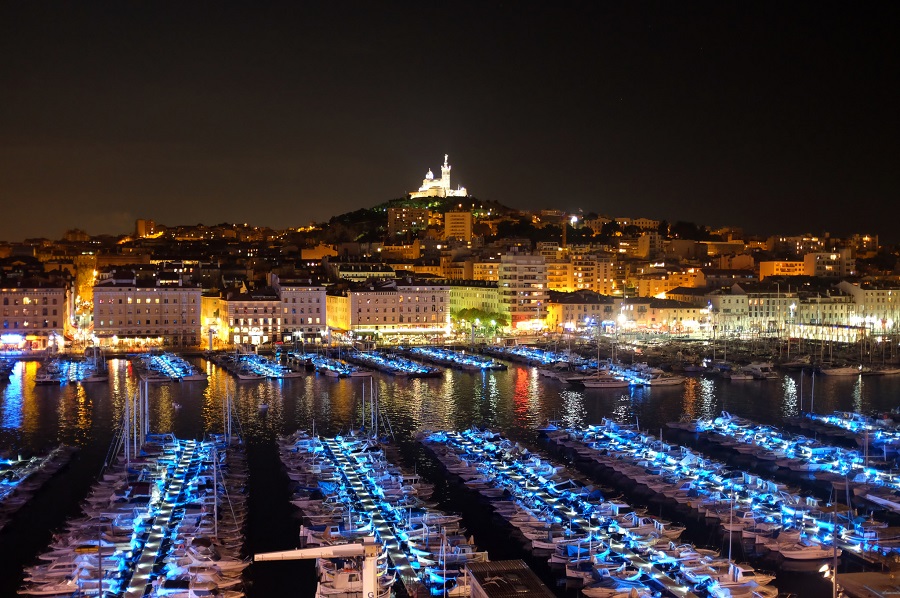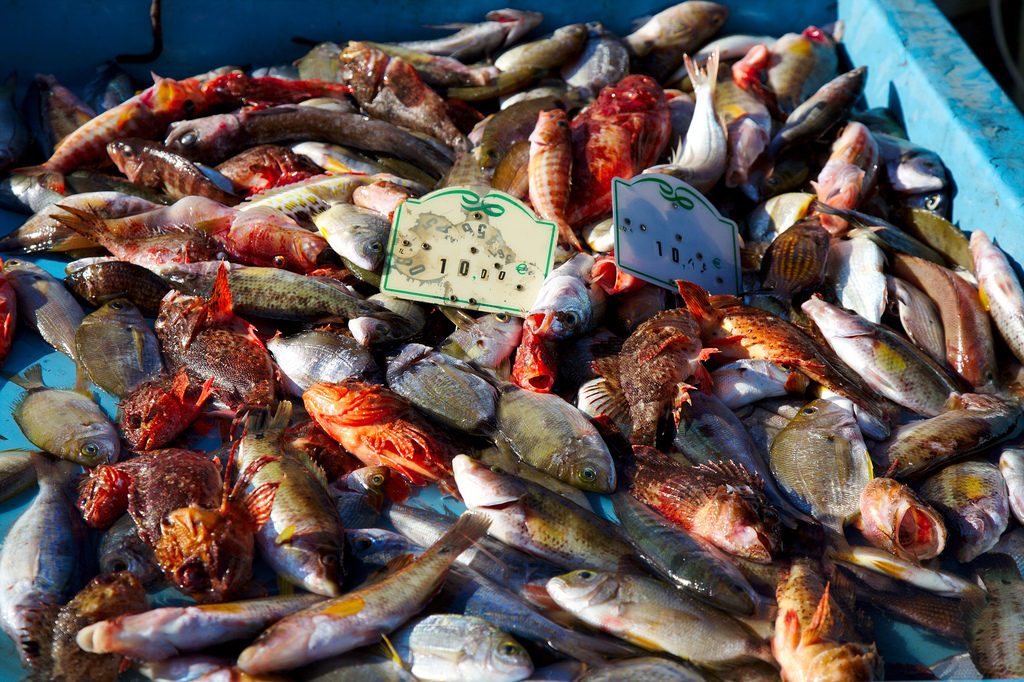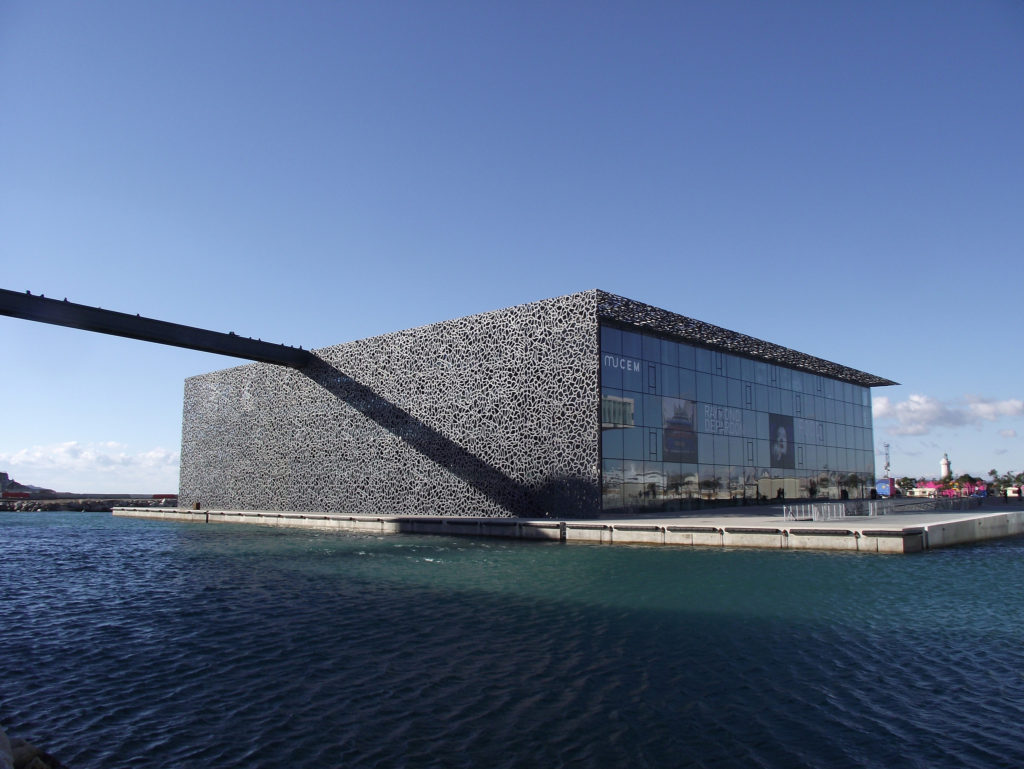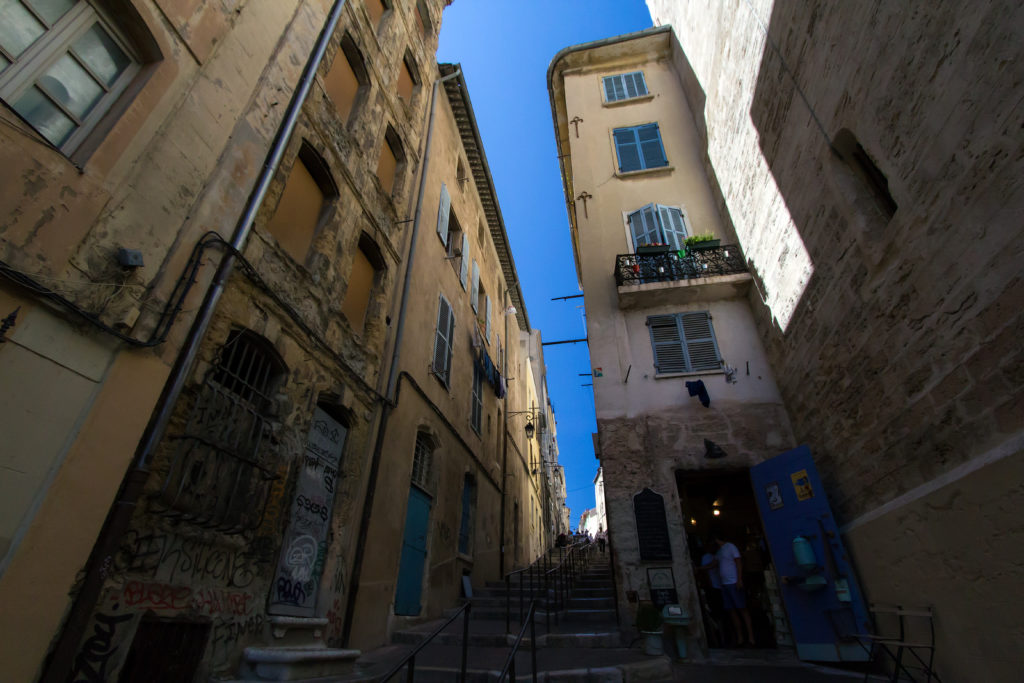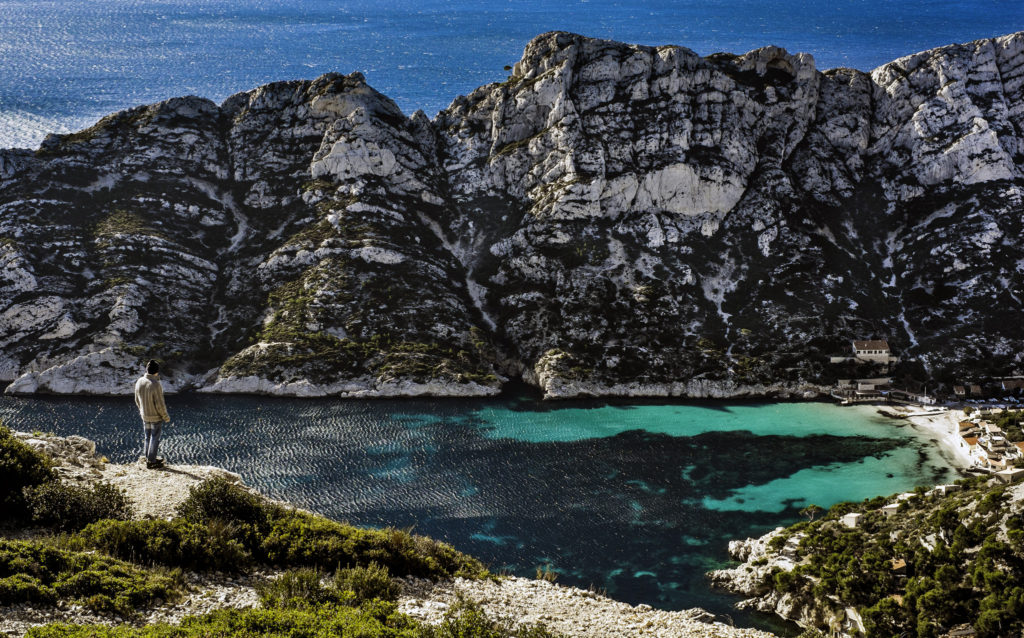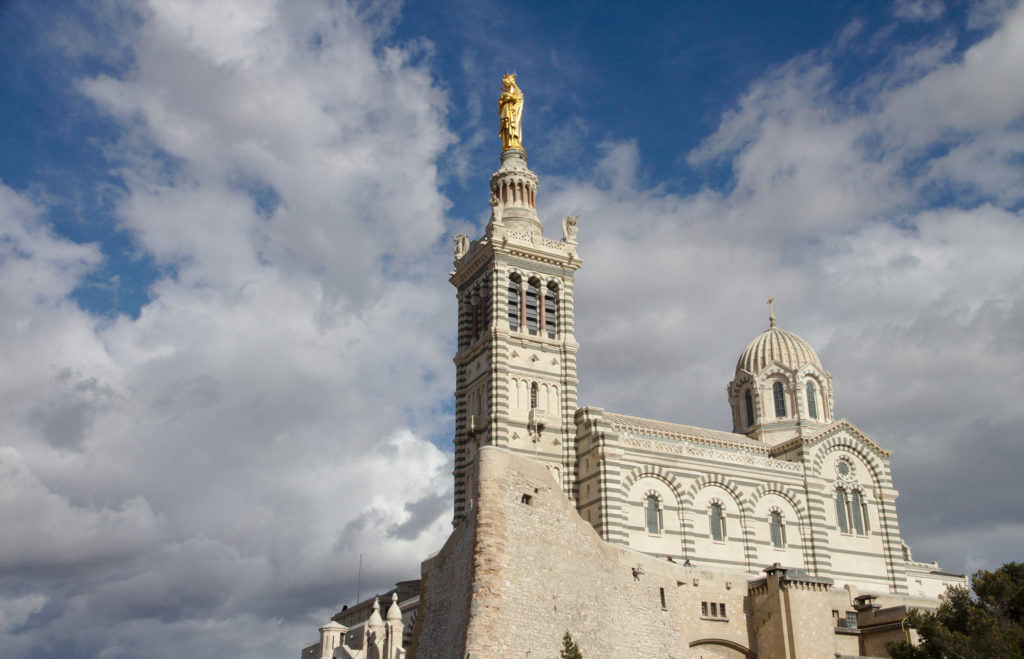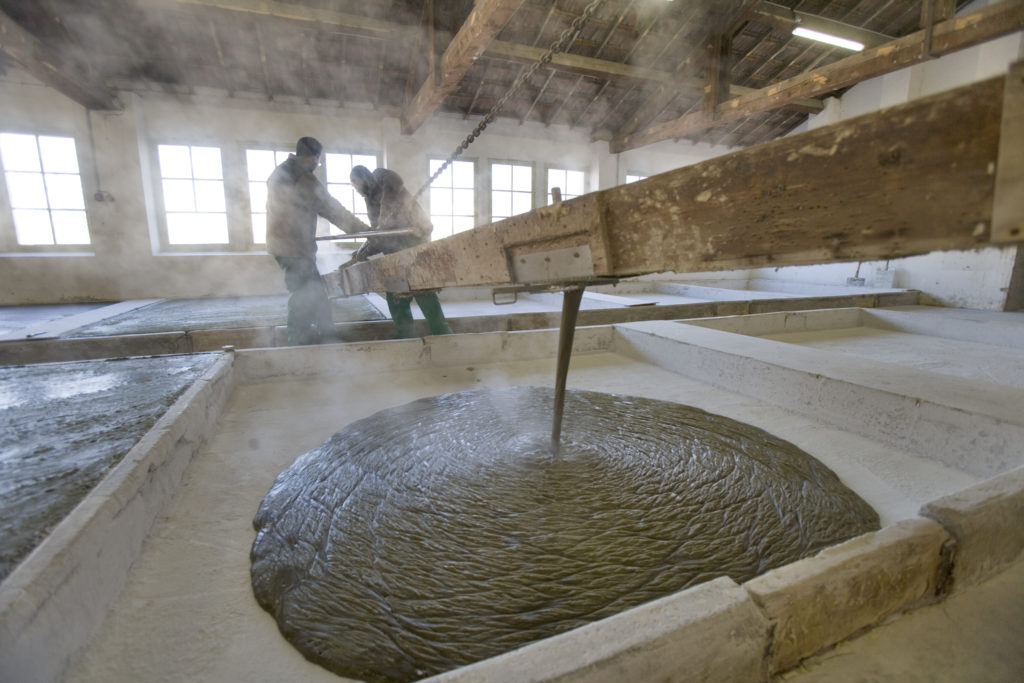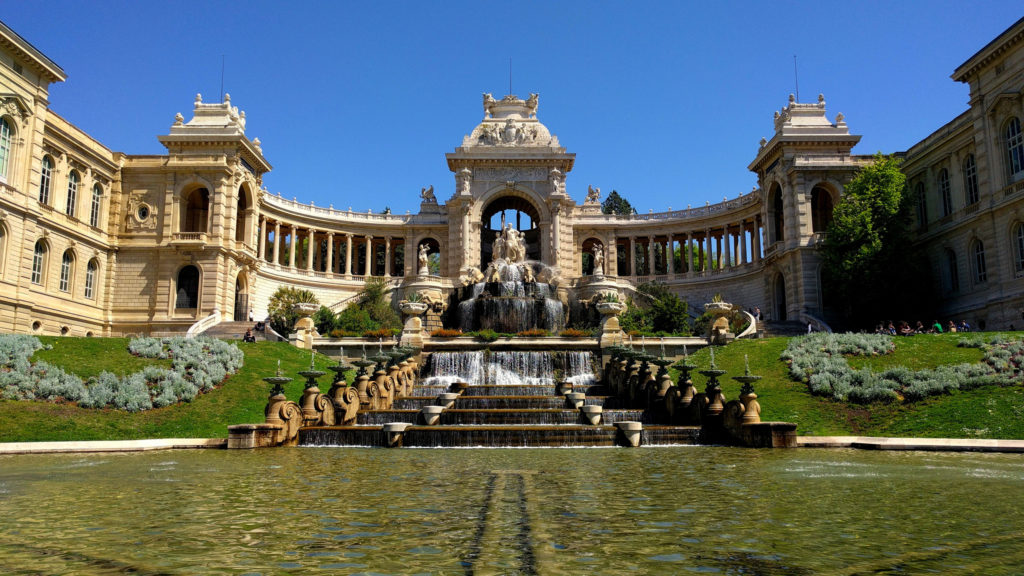From sipping pastis in the Old Port to discovering the local crafts, a visit to Marseille includes ancient districts, wonderful seascapes and a state-of-the-art museum dedicated to the Mediterranean Sea.
France’s second largest city, Marseille, is a multicultural hub overlooking the Mediterranean. Here, the Provençal lifestyle meets an international outlook, urban vibes are coupled with stunning surrounding nature, and local traditions reveal the influence of near and faraway cultures. Historic landmarks such as Notre-Dame de la Garde, the Panier district and If Castle are still among the top attractions, but the city also boasts a fresh look that accompanied its designation as European Capital of Culture in 2013.
Stroll around the Vieux-Port
Marseille’s innate maritime vocation is celebrated in the Old Port. It’s where the earliest settlers landed, and visitors still find here the city’s main hub and one of its most picturesque areas. Every morning, people crowd the fish market’s stalls on the Quai des Belges, while the cafés and restaurants scattered all around provide plenty of opportunities for boat watching and food sampling. While touring the area, the attractions to look for include the lighthouse, the Church of Saint-Ferréol Les Augustins, Saint Victor’s Abbey and the Museum of European and Mediterranean Civilisations.
Immerse yourself in the Mediterranean culture
The MUCEM (Museum of European and Mediterranean Civilisations) launched in 2013, as part of the city’s makeover that marked its nomination as European Capital of Culture. Five years on, the museum has established itself as a leading institution, seeking to shed light on the roots, history and current state of the cradle of civilisation that is the Mediterranean Sea. Spread across three buildings, the rich programme of exhibitions and activities fosters a multidisciplinary approach, bringing together art, history, anthropology and archaeology, which places the MUCEM at the vanguard of Marseille’s cultural scene.
7 Promenade Robert Laffont, 13002 Marseille
Lose your way in the Panier
Steep streets, quaint little squares and colourful alleys cover the hill north of the Old Port. This is the Panier (‘The Basket’), the city’s oldest district founded by the Greek settlers over 2,500 years ago. Today, the area retains a village-like feel which isolates it from the rest of Marseille, providing visitors with an irresistible mix of ateliers, craftsmen, terraces and cafés. Vieille Charité, Cathédrale de la Major and La Maison Diamantée are some of the landmarks located in the area, but the best way to experience the Panier is by getting lost in it.
Try Marseille’s famed fish soup
The bouillabaisse is the flagship dish of the Provençal cuisine. It’s a fish soup featuring at least four varieties of fish picked from a range of options, the only strict rule being the absolute freshness of the produce. The broth is normally served separately, along with rouille sauce and croutons. Among many other options, Miramar’s and Chez Fonfon’s serve two of the most acclaimed bouillabaisse in town, while L’Aromat serves an original bouillabaisse burger. When properly made, this dish should cost from around €40 per person upwards.
Miramar – 12 Quai du Port, 13002 Marseille
Chez Fonfon – 140 Rue du Vallon des Auffes, 13007 Marseille
L’Aromat – 49 Rue Sainte, 13001 Marseille
Pay a visit to the city’s ‘Good Mother’
Locally known as ‘Bonne Mère’ (Good Mother), Notre-Dame de la Garde basilica is Marseille’s most iconic landmark. It watches over the city from its privileged post on Garde Hill, a site historically used for surveillance, with both military and religious purposes. When the previous structures became insufficient for the increasingly large number of pilgrims by the mid-19th century, construction of the basilica started. It is formed of a low church with a crypt and a high church, topped by Roman-Byzantine domes and richly adorned with gold and mosaics. Inside, a museum explores the 800-year history of the site.
Rue Fort du Sanctuaire, 13281 Marseille
Explore the calanques along the coast
The calanques are the peculiar coves that wrinkle the coastal line immediately south of Marseille. A national park since 2012, this area is home to a remarkably rich array of wildlife, hidden fishing villages and wonderful landscapes. If the creeks along the coast are best explored from the sea, a hiking tour provides a full immersion in the flora and fauna of the park, as well as stunning views from the uplands. Either way will make for a refreshing break from the urban trappings of the city.
Visit Le Corbusier’s architectural gem
Built in 1952, La Cité Radieuse (The Radiant City) was a groundbreaking project by modernist architect Le Corbusier. This residential complex redefined the concept of urban living and is today listed as a UNESCO World Heritage. It can be visited by joining one of the guided tours run by the tourism office, which include the hall, the internal street, the roof terrace and exclusive access to an apartment listed as a historical monument. The complex also hosts a high-end restaurant and a hotel.
280 Boulevard Michelet, 13008 Marseille
Enjoy the sunset with a local aperitif
Sunny terraces, hip bistros and bars with vistas are more the rule than the exception in Marseille. They provide excellent settings for a pre-dinner drink, something that is locally regarded as a quasi-religious ritual. A glass of pastis (an aniseed drink) accompanied by panisse (chickpea flour chips) makes for a truly Marseillais aperitif. The range of options is wide and varied. Le Caravelle offers jazzy vibes and a terrace overlooking the Old Port, R2 boasts one of the city’s most popular rooftops, and Le Cabanon Marseillais is the place to go for proper panisse with a more intimate ambience. Countless other options are scattered all over the city.
Le Caravelle – 34 Quai du Port, 13002 Marseille
R2 – 9 Quai du Lazaret, 13002 Marseille
Le Cabanon Marseillais – 2 Rue Jules Moulet, 13006 Marseille
Discover the pastis factory
If sipping pastis is a popular activity in Marseille, doing it while learning how it is made is a much more unusual experience. Cristal Limiñana is one of the few remaining factories in town, and its bottling plant is open to visitors. During the tour, guests learn all about the production of pastis, its recipe, and the difference from another aniseed drink prepared in the factory. But what makes the experience all the more interesting are the anecdotes of this family-owned business, which started in 1884 and spread across the Mediterranean Sea. A very Marseillais story of migration and tradition.
99 Boulevard Jeanne d’Arc, 13005 Marseille
See how the Savon de Marseille is made
Hailing from an age-old Syrian technique using laurel and olive oil, soap is perhaps Marseille’s most famous product. Many factories are open to visits, providing an interesting journey through the history, smells, skills and people behind this local craft. The main options in Marseille are Fer à Cheval, Savvonnerie Le Serail and Savonnerie Marseillaise De La Licorne, while the museum at Savonnerie Marius Fabres is a good excuse to plan a trip out of town and head to the countryside.
Fer à Cheval – 66 Chemin de Sainte Marthe, 13014 Marseille
Savvonnerie Le Serail – 50 Boulevard Anatole de la Forge, 13014 Marseille
Savonnerie Marseillaise De La Licorne – 34 Cours Julien, 13006 Marseille
Marius Fabre – 148 Av. Paul Bourret, 13300 Salon de Provence
Find history and literature at If Castle
Located about a mile offshore, this fortress was originally intended as a strategic guarding post. It then served as a state prison for nearly 300 years, and became world-famous thanks to the fictional characters depicted by Alexandre Dumas in ‘The Count of Monte Cristo’, partly set in the castle. The tour includes the dungeons, the cells, the signs left by the prisoners and the view over Marseille from the barren island on which the fortress stands. The boat trip operated by Croisières Marseille Calanques pairs the visit to the castle with a tour of the Bay of Marseille.
Boarding – Quai du Port / Quai des Belges (corner), 13002 Marseille
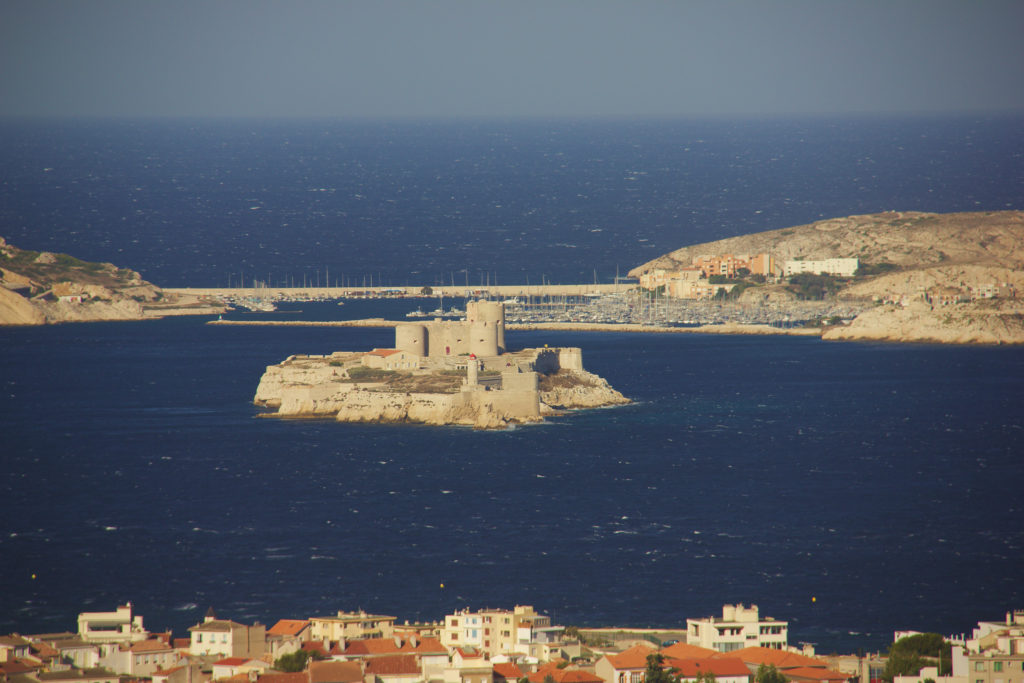
Many famous real and fictional characters were imprisoned at If Castle (Photo: Bowfinger26 via Flickr)
Learn all about pétanque
More than just a boules sport, pétanque is part of the Provençal way of life. Marseille is dotted with boulodromes (‘petanque courts’), where youth and elders alike challenge each other at getting their boules as close to the target as possible. Tourists get acquainted with this sport by watching it on the streets, but the Maison De La Boule opened in 2015 to offer a more insightful look. This free mini-museum presents the history of petanque, focusing on how the craft of boules has evolved over time. Those who feel inspired enough may even have a go on the small indoor boulodrome.
4 Place des 13 Cantons, 13002 Marseille
Explore Park Longchamp and its monumental palace
Palais Longchamp opened in 1869 to celebrate the arrival of water from the Durance River to Marseille, which put an end to years of growing concerns about the city’s water supply. Designed by Henry Espérandieu, the architect of Notre-Dame de la Garde, this spectacular palace features a grand fountain and works by the famous animal sculptor Antoine Louis Barye. The right wing of the palace houses the Natural History Museum, while the Museum of Fine Arts was relocated to the left wing in 2013. The park around the palace also features a zoological garden and a planetarium.
Palais Longchamp, Rue Espérandieu, 13004 Marseille
Meet the santons in Marcel Carbonel’s workshop
A local tradition dating back centuries, the santons (‘little saints’) are small hand-painted figurines of the nativity scene. In Marseille, Jean-Louis Lagnel was the first santonniere to use clay in 1797, thus making the figurines available to ordinary people. The artisanal tradition continues today in workshops such as Marcel Carbonel’s, a recognised master whose legacy is showcased in this boutique and museum. Depicted with striking details, a rich variety of characters is displayed on the shelves, many of which represent typical folks from a Provençal village.
47 Rue Neuve Sainte Catherine, 13007 Marseille
